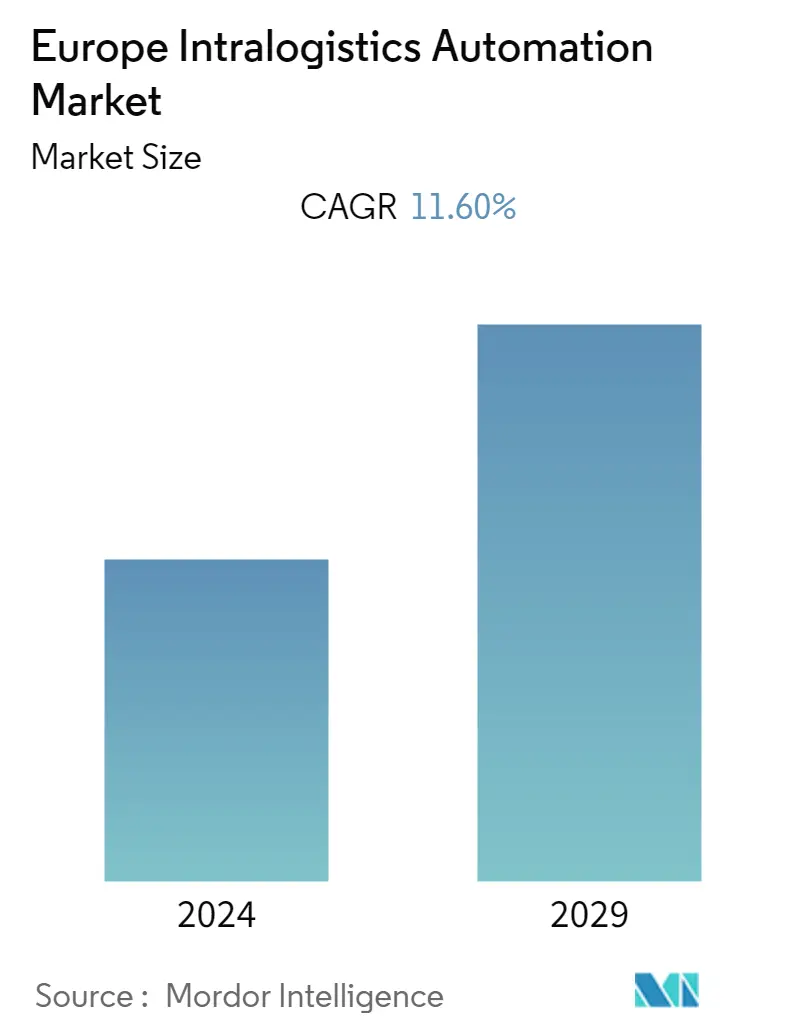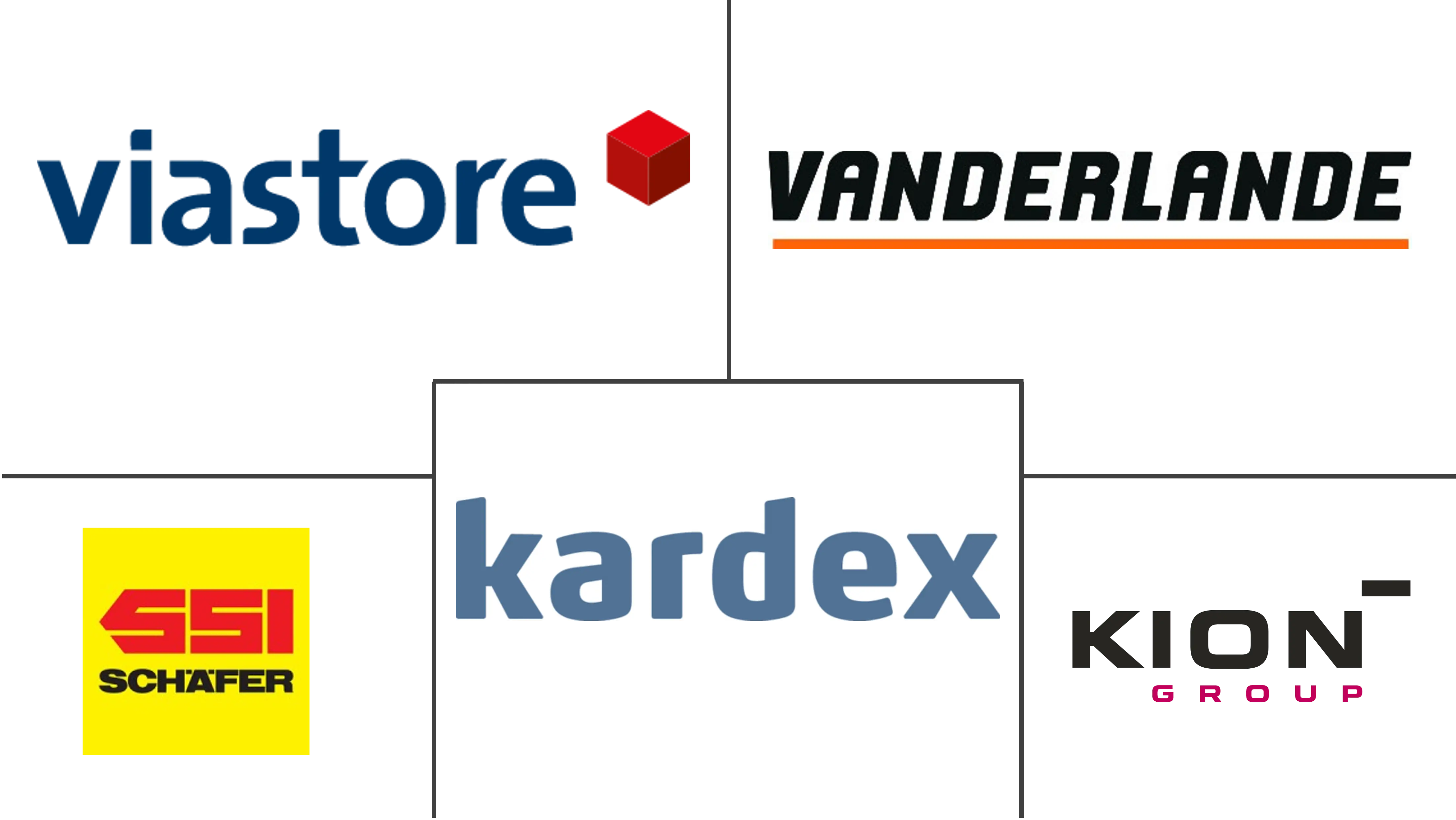Market Size of Europe Intralogistics Automation Industry

| Study Period | 2019 - 2029 |
| Base Year For Estimation | 2023 |
| Forecast Data Period | 2024 - 2029 |
| Historical Data Period | 2019 - 2022 |
| CAGR | 11.60 % |
| Market Concentration | Low |
Major Players
*Disclaimer: Major Players sorted in no particular order |
Need a report that reflects how COVID-19 has impacted this market and its growth?
Europe Intralogistics Automation Market Analysis
The European intralogistics automation market is expected to grow at a high CAGR of 11.6% over the forecast period. The market is growing due to the universal demand for increased productivity and efficiency across industries. Furthermore, the advent of Industry 4.0 has compelled industries to go digital with their supply chains.
- Due to increased investments in the Industry 4.0 revolution, Europe has become the most prominent industrial automation adopter. According to the CBI Ministry of Foreign Affairs, Europe accounts for more than one-third of global Industry 4.0 investments. Western and Northern Europe are its primary markets, particularly Germany, the originator of the term and a market leader.
- Intralogistics is in high demand across Europe. Automation is expected to increase significantly with the adoption of cutting-edge technologies such as IIOT (Industrial Internet of Things) and 5G by manufacturing industries in order to boost productivity, thereby improving the harmonious use of technology, labor, and equipment. Furthermore, smart supply chain technology adoption is on the rise. Companies are heavily investing in warehouse management software in order to create a savvy supply chain. This software ensures on-time delivery, giving businesses a competitive advantage.
- This has made logistics companies understand the specific demand effects of their business, develop a short-term demand synchronization strategy, and plan for possible channel shifts. Also, the companies shifted to using automation for better logistics services.
- Moreover, many industries are changing their priorities in order to survive the insidiously rapid digital age and contribute significantly to the entire world. Progressive globalization has become essential for companies looking to grow. Market internationalization and in-progress integration, as well as the emerging impact on society, are used to categorize globalization. World trade and economic growth have been boosted by increasing exports and imports through the use of intralogistics and the inclusion of emerging nations.
- The booming e-commerce sector has the potential to support the development of intralogistics solutions. Global e-commerce has experienced significant growth as a result of rising customer connectivity driving demand. Due to the low prices of its products, this industry is flourishing. Significant e-commerce trends that are influencing the intralogistics industry include zero-defect goals, seasonal peaks; shorter delivery times; bidirectional commodity flows; flexible delivery slots; and a wider range of parcel sizes and weights. The intralogistics market will expand alongside e-commerce as it reaches new heights.
- However, installing intralogistics in any industry is a difficult task. Both the process's complexity and its associated costs are quite high. The cost of designing, planning, and installing intralogistics is included in the setup cost. Robots, AS/RS, automated guided vehicles, and sorting systems are more expensive than anticipated.
- The COVID-19 pandemic spread significantly across the globe, including Europe, thereby severely impacting the logistics and supply chain operations, particularly in countries such as Germany, France, Italy, and the United Kingdom. Retail, industrial goods, and consumer goods are among the major industries in Europe that have been severely impacted by the COVID-19 outbreak. Supply chain disruptions impacted businesses in both the long and short term.
